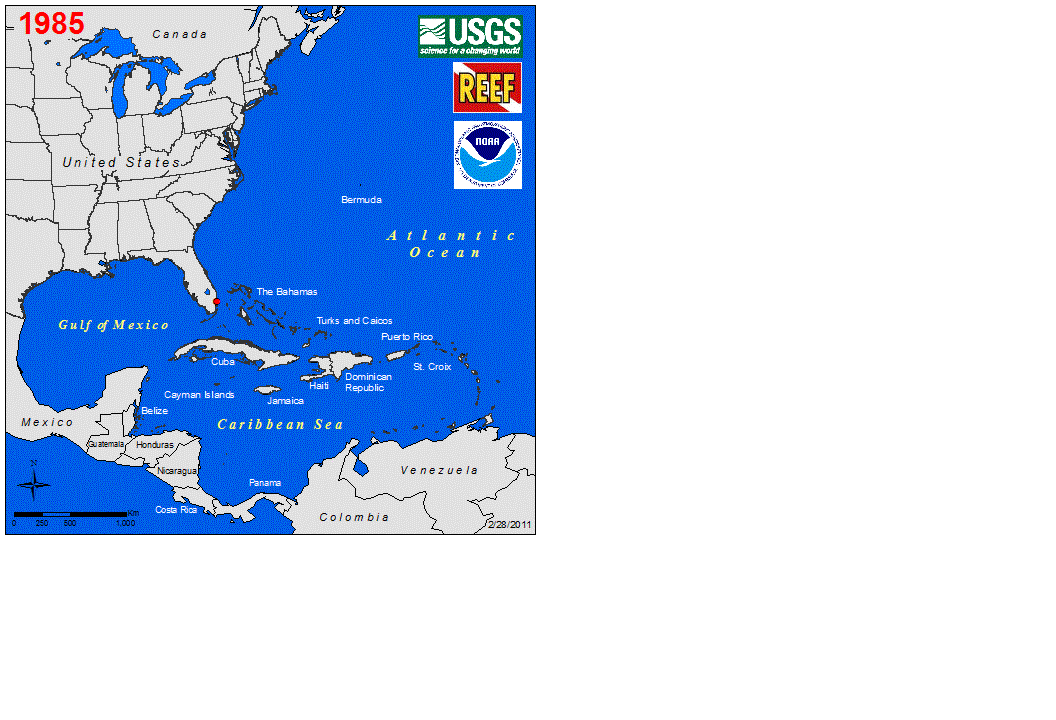- Two visually identical species of lionfish (Pterois miles and P. volitans) were introduced into the Atlantic via the US aquarium trade beginning in the 1980’s.
- Lionfish invaded range is North Carolina to South America including the Gulf of Mexico.
- Lionfish have established throughout most of the Caribbean in less than five years.
- Lionfish may live decades and reach sizes exceeding 47cm (19 in).
- Lionfish inhabit all marine habitat types and depths (shoreline to over 300 m or 1000 ft).
- Lionfish possess venomous spines capable of deterring predators and inflicting mild to serious stings and reactions in humans.
- Lionfish temperature tolerance is approximately 10-‐35°C (50-‐95°F).
- Lionfish become sexually mature in less than a year and spawn in pairs.
- Reproduction occurs throughout the year about every 4 days.
- In the Caribbean, a single female lionfish can spawn over 2 million eggs/year.
- Lionfish eggs are held together in a gelatinous mass of 12,000 to 15,000 eggs and are dispersed at the ocean’s surface by currents.
- Their larval duration is approximately 25 days.
- Lionfish can reach densities of over 200 adults per acre.
- Lionfish are generalist carnivores that consume over 70 species of fish and many invertebrate species, capable of eating prey up to half their body length.
- Many lionfish prey on commercially, recreationally, and ecologically important species.
- Dense lionfish populations can consume more than 460,000 prey fish/acre/year.
- On heavily invaded sites, lionfish have reduced their fish prey populations by up to 90% and continue to consume native fishes at unsustainable rates.
- Native predators exhibit avoidance for lionfish.
- Lionfish are susceptible to very few parasites compared to native species.
- Lionfish exhibit site fidelity.
- Lionfish have a high affinity for structure and feed primarily during dawn and dusk.
- Lionfish are edible and considered a delicacy.
- Local removal efforts that are sustained can significantly reduce lionfish densities.


